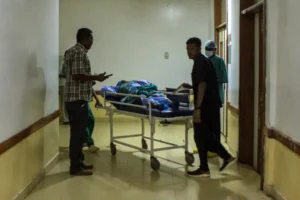Launch of Regional Statistical Report on Trafficking in Persons for the SADC Region
PRETORIA, South Africa, December 20, 2017/ — UNODC and SADC Secretariat will release an inaugural Regional Statistical Report on trafficking in persons, based on data uploaded into the SADC Regional Trafficking in Persons Data Collection System and also directly from law enforcement and other agencies in countries that are not yet linked to the System. This will happen at regional workshop currently taking place in Johannesburg, bringing together national focal persons working on trafficking in persons from most SADC Member States.
The Regional Data Collection System for SADC Member States was developed in 2014 and piloted in Lesotho and Swaziland, with engagement of South Africa in 2014. It has since been rolled out to nine (9) other SADC Member States, namely Botswana, Madagascar, Malawi, Mozambique, Namibia, Seychelles, Tanzania, Zambia and Zimbabwe. Each country has designated users of the system from key sectors responsible for data collection on trafficking in persons, and drawn variously from the respective Secretariats for the inter-ministerial coordinating committees on trafficking in persons. These key sectors include, but not limited to, the police, immigration, prosecution and social services. Each country has a national hub, which is linked to the regional hub. This enables countries to maintain a safe repository for national data and statistics, while sharing data and good practices, in particular on legislation, policy and case law, with other countries in the region.
Most countries’ legislative provisions specifically criminalising trafficking in persons are relatively new in the region, and collecting and sharing data is particularly critical for purposes of informing decision making and facilitating cooperation and coordination amongst member states, especially where trafficking in persons crosses borders and is intra-regional in nature.
The report identifies a unique trend in the SADC region of the majority of victims of trafficking in persons being male, making up about 71% of all the victims identified. The most prevalent form of exploitation is labour exploitation, which seems to correspond with the type of victims identified, as traffickers aim to satisfy labour-intensive markets. However, conviction rates remain low in the region with most countries reporting less than 10 convictions per annum.
These kinds of trends help guide SADC Member States on where to concentrate their national efforts to counter trafficking in persons.





